Florida
Nature Pictures
Butterflies
![]()
Florida
Nature Pictures
Butterflies
![]()
Atala
Butterfly Life Cycle
![]()
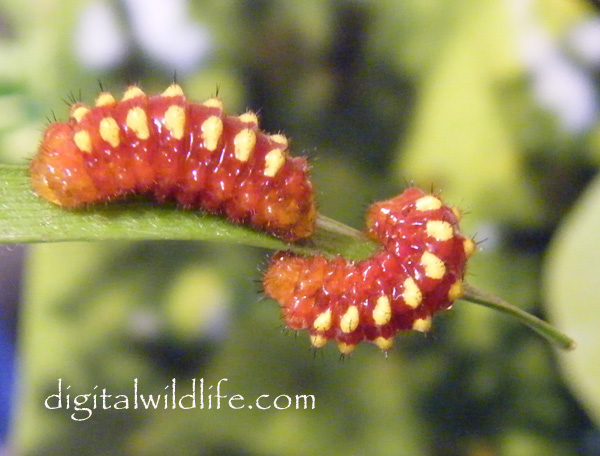
The larvae
of the Atala Butterfly are bright reddish orange wuth two rows of
yellow spots down the back. Their mature length is only about 1 1/2 inch.
The host plant is the Coontie or Zamia.
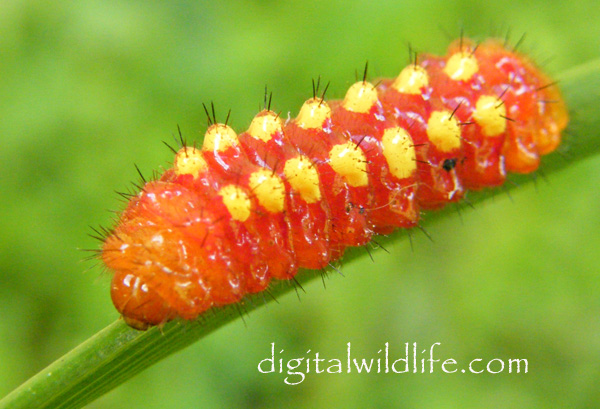
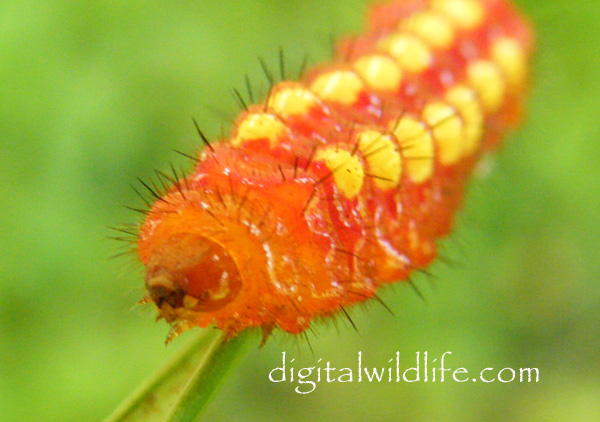
Here are some close up shots.
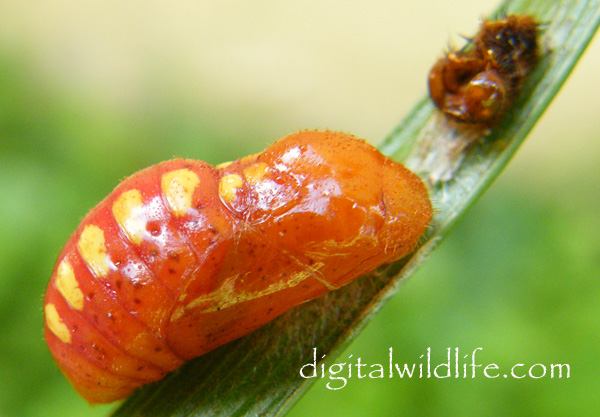 .
.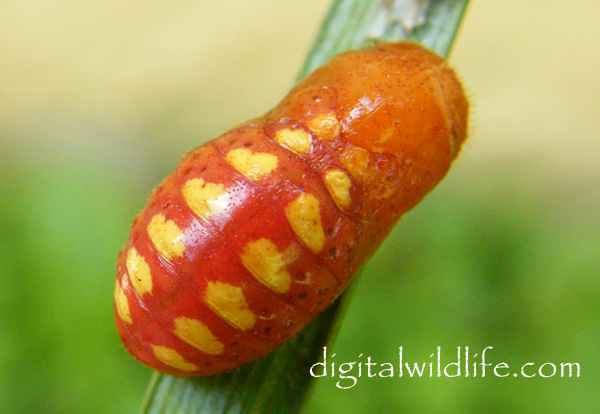
4 days
later, they became pupa. The brown material you see on the picture
above left is what was shed as the caterpillar became a pupa.
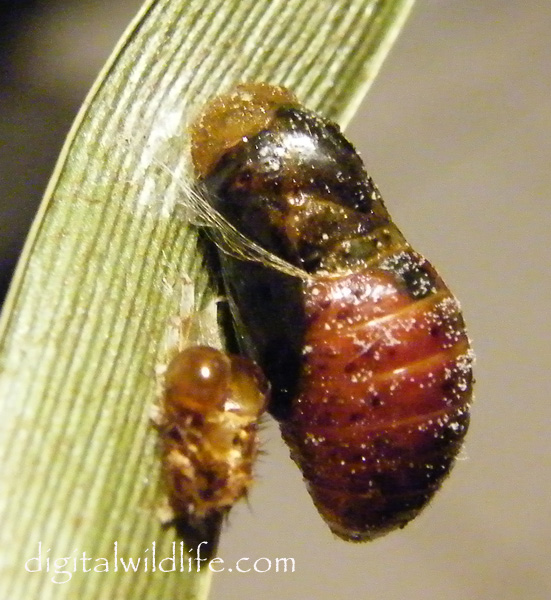
About
2 weeks later, you can tell that the butterfly is almost ready to emerge.
The pupa starts to darken almost to black where the wings are developing and
red where the abdomen is.
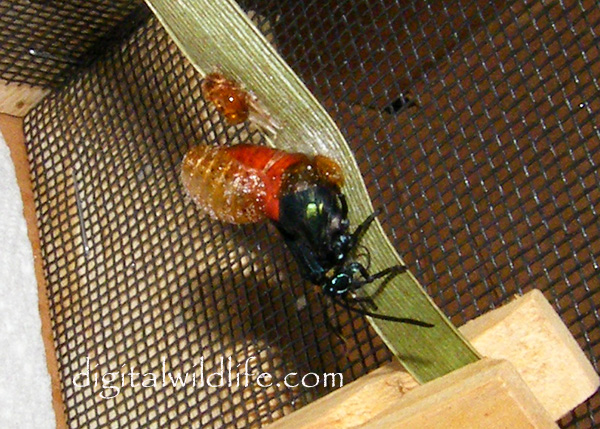
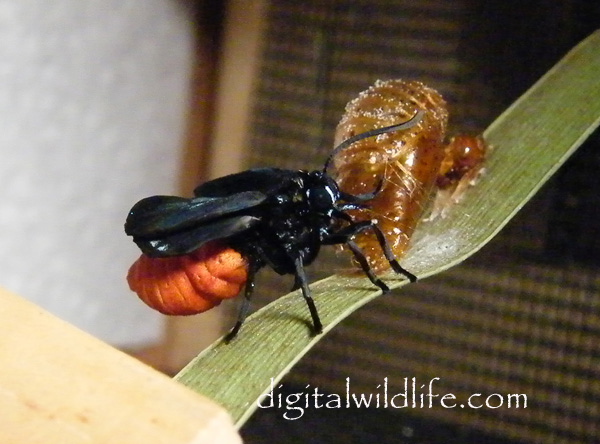
The
very next morning, the Atala Butterfly emerged!
At 10:15 AM, she started to come out of the cocoon. By 12:30 PM, the wings
were completely dry and she was ready to fly.
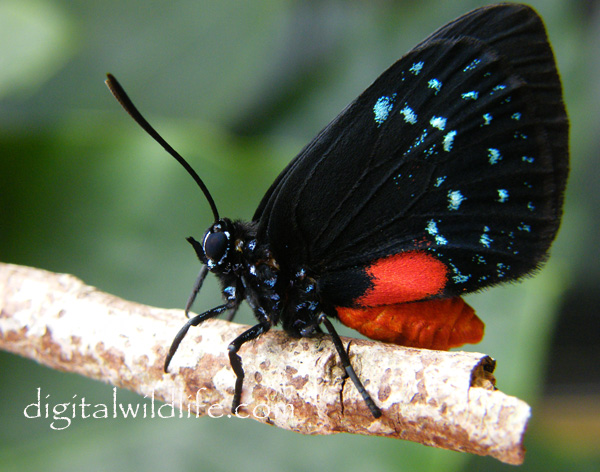
Here she is in all her beauty !
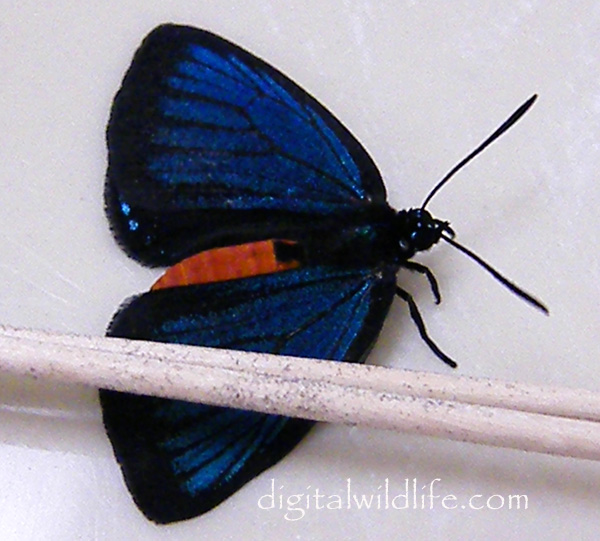
It was
very hard to get her to open her wings so I could Photograph them open.
I cheated a bit and held her wings open very softly !
The Atala butterfly
is a very special, rare little butterfly. Also known as the Coontie Hairstreak,
these beauties have a wingspan of only 1 3/4". The Atala caterpillars
host plant is the Florida native Coontie Cycad Zamia pumila.
The Florida Coontie plant was almost driven to extinction because of destruction
of its native habitant
and over harvesting for the production of starch. Along with the Coontie,
the Atala were beleived to have become extinct.
Thankfully, with the return of the Coontie because of increased use in landscaping,
the Atala have also returned!
Atala butterflies lay their eggs on the tips of young Coontie plant leaves.
The eggs hatch
in about 4 to 5 days.
The Atala caterpillars are bright reddish orange with 2 rows of 7 yellow
spots down the back.
The bright colors are a warning for potential prey. Coontie plants have
cycasin which is highly toxic.
As the caterpillars feed, they store the cycasin in their bodies.
This toxicity stays with the Atala through its entire life cycle.
They reach a mature length
of 1 1/2" in about 18 days. Then, they are ready to become pupa.
For about 10 days, they remain
in the pupa. The day before the Atala emerges, the pupa becomes black
toward the top and dark
red or brown towards where the abdomen is.
The next morning the butterly emerges! It will hang
upside down for an hour or two till the wings have dried.
The adult butterfly stays close to the
host plant for its 10 day life as a butterly.
Various nectar plants are used by the Atala Butterfly.
This article has an
extensive list of nectar sources.